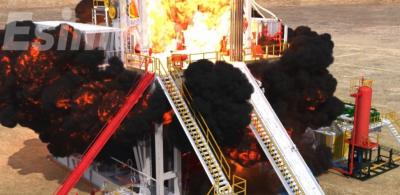VR Emergency Training Simulator for Oil and Gas Professionals
-
Imagine being able to walk through a high-pressure emergency in a refinery or on an oil rig without leaving a training room. Virtual Reality (VR) emergency training simulators are making this possible, equipping workers with hands-on experience in a risk-free environment.
What is a VR Emergency Training Simulator?
A VR Emergency Training Simulator is a digital tool that immerses users in realistic oil and gas scenarios. Equipped with headsets and controllers, workers navigate lifelike environments to practice critical procedures.
Key Features of VR Simulators
Hyper-Realistic Environments: Simulate complex facilities like offshore rigs, refineries, and pipelines.
Scenario-Based Training: Handle emergencies such as fires, gas leaks, explosions, or equipment malfunctions.
Real-Time Feedback: Get immediate assessments of decision-making and procedural adherence.
Multi-User Interaction: Team training enables collaboration in simulated emergencies.
Why Oil and Gas Companies Are Adopting VR Training
Safety: Train for hazardous situations without endangering lives.
Efficiency: Reduce downtime by training employees without taking equipment offline.
Global Reach: Train a geographically dispersed workforce in a unified environment.
Employee Perspectives
Improved Confidence: Workers report feeling more prepared for emergencies after VR training.
Engagement: The immersive nature of VR keeps trainees focused and invested.
Future Potential
With advancements in AI and VR hardware, these simulators could incorporate predictive analytics, helping companies anticipate potential emergencies before they occur.
Conclusion
VR emergency training simulators are revolutionizing safety protocols in the oil and gas industry. They not only improve preparedness but also create a culture of safety and innovation. As the technology evolves, the industry can look forward to safer operations and more resilient teams.
